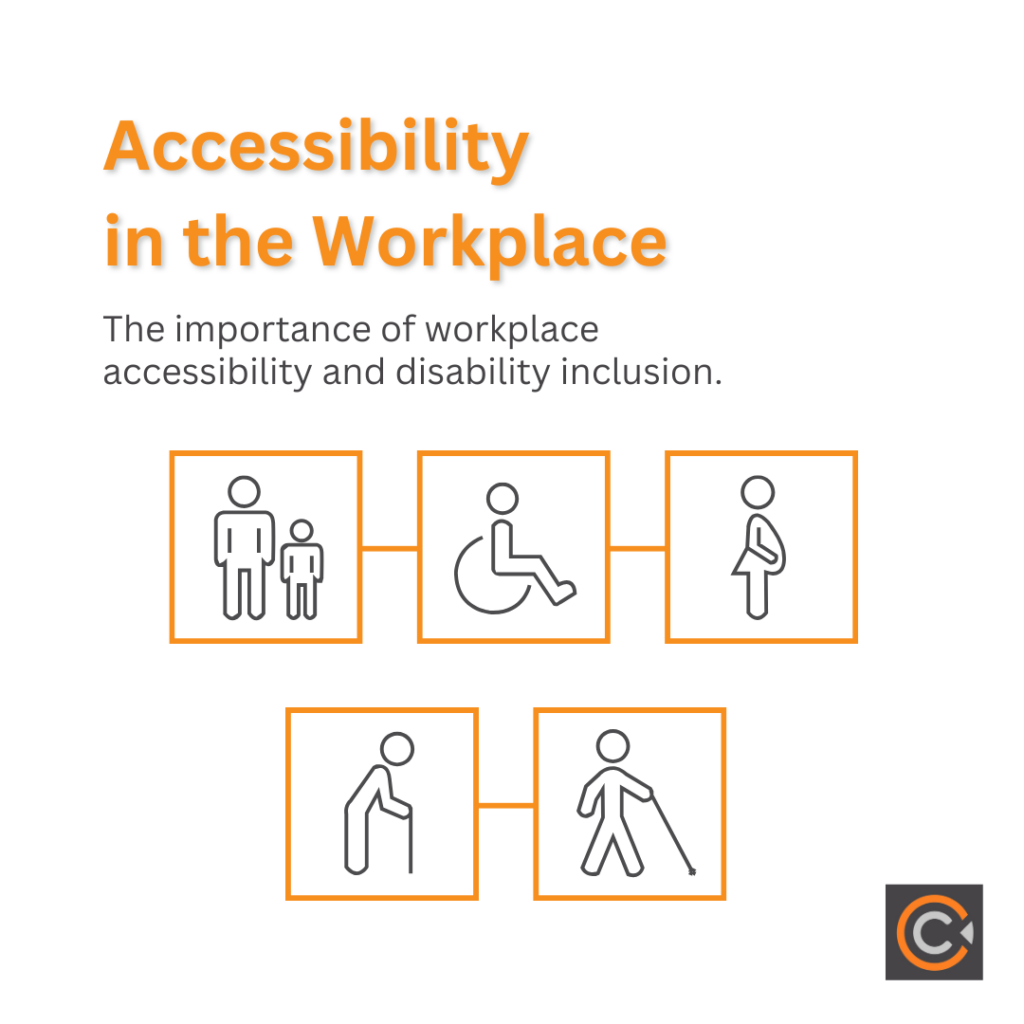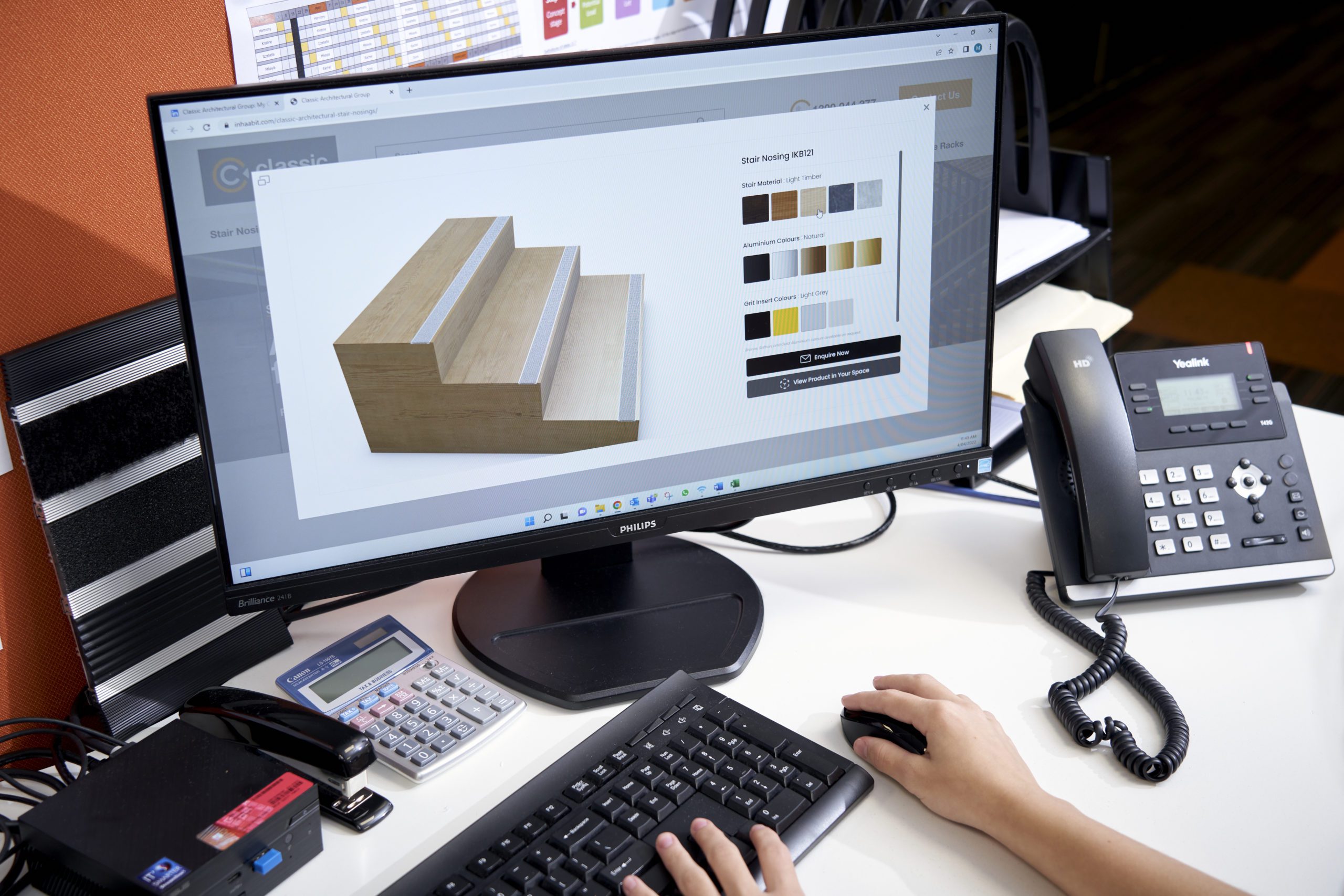Discover the importance of making workplaces accessible for individuals with disabilities
In Australia, almost 1 in 5 people have a disability and 45.2% of those employed reported that they had experienced unfair treatment or discrimination from their employer, due to their disability. Furthermore, the unemployment rate of working-age people with a disability is 10%, which is more than double the 4.6% of those without a disability.
Due to a lack of employer confidence and awareness, Australia has a disability employment gap of 32%, which is much higher than other countries such as Sweden’s 9.5% and France’s 9.9%.
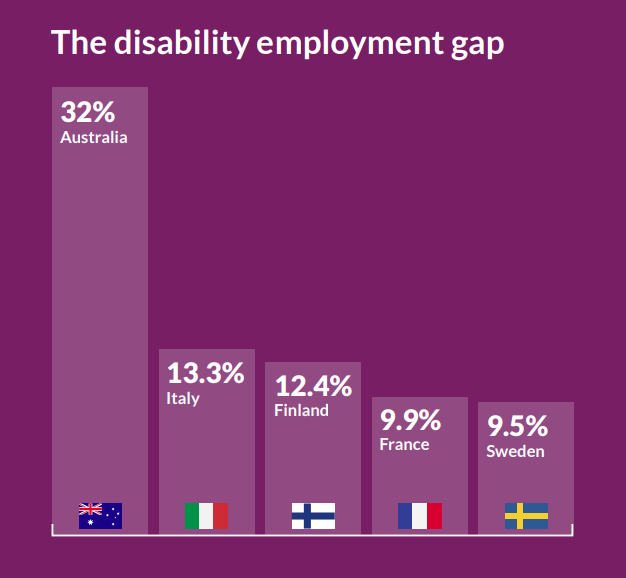
Debunking the common myths and misconceptions, the latest research review update by JobAccess, the Australian Government’s disability employment hub, seeks to promote the clear benefits and undisputed rewards of hiring people with disabilities.
Besides complying with anti-discrimination laws and providing equal employment opportunities, facilitating an accessible workplace can help both employees and organisations as a whole, to achieve long-term success.
In this blog, we’ll explore various types of disabilities, the advantages of creating an inclusive workplace, and how you can ensure accessibility for everyone.
Ensuring compliance with the relevant anti-discrimination laws in Australia
There are several federal laws in place to protect individuals from unlawful discriminatory actions in the workplace and other areas of public life.
In addition to federal laws, each state and territory also has anti-discrimination legislation to address regional issues. These anti-discrimination laws cover disability as well as other protected attributes such as age, race, sex, intersex status, gender identity and sexual orientation.
Concerning disability discrimination, employers must familiarise themselves with the following, but not limited to:
- Disability Discrimination Act 1992
- Australian Human Rights Commission Act 1986
- Fair Work Act 2009
- Disability (Access to Premises – Buildings) Standards 2010
All employees and prospective employees are covered by these protections including full-time, part-time and casual members, probationary employees, apprentices and trainees, and contractors.
Understanding the various types of disabilities
When advocating accessibility, it is essential to be aware and respectful of the highly varying types of disabilities that may present in the workplace. These can include mobility, sensory, and cognitive disabilities – some of which may also be invisible.
Under the Equal Opportunity Act 2010, disability can include:
- physical, psychological or neurological disease or disorder
- illness, whether temporary or permanent
- injury, including work-related injuries.
While employees aren’t legally obliged to disclose their disabilities or injuries, employers are required to make ‘reasonable’ adjustments to allow people with disabilities to work safely and productively. They must also act in compliance with the Disability Standard under the Disability Discrimination Act 1992.
Whether it be flexible work hours or structural changes, employers must accommodate reasonable adjustments if a person needs it to apply for a job, accept a job offer, or be able to perform the expected requirements of the job. For more examples of ‘reasonable’ adjustments, click here.
The more aware you are, the more you can prepare and adapt your workplace to be inclusive.
Why workplace accessibility matters
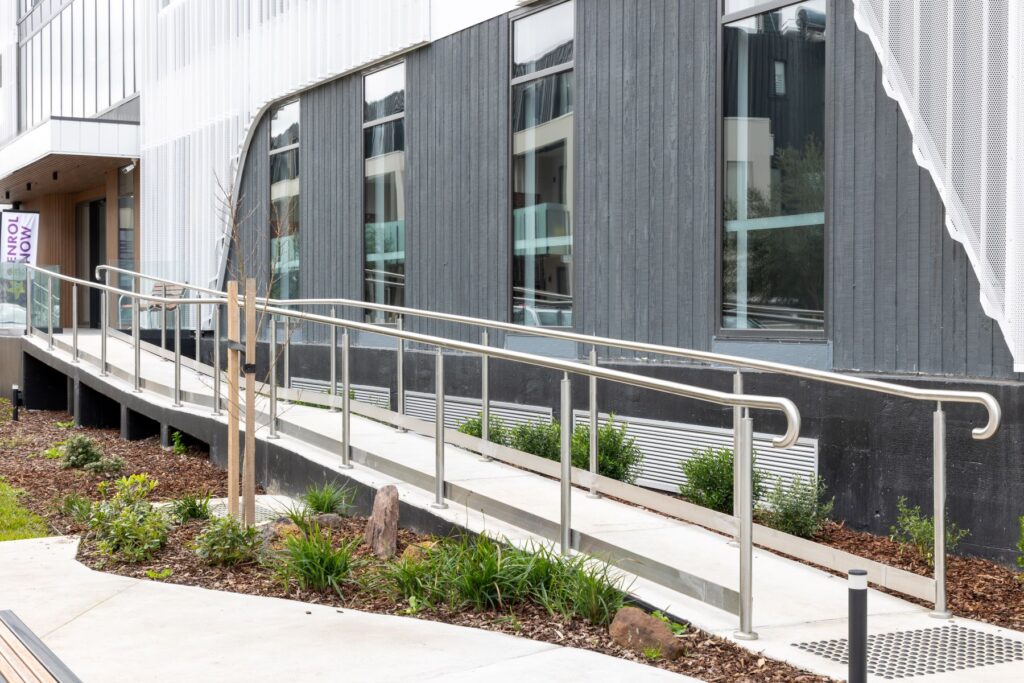
Image Credit: Pixel Collective
Creating an inclusive workplace and actively hiring people with disabilities can offer numerous benefits for both employees and organisations as a whole.
In today’s tight labour market, some key benefits can include (but are not limited to):
- Attracting a diverse talent pool to bridge skill gaps
- Boosting employee morale and creating a more positive work culture
- Enhancing employee engagement and productivity while reducing absenteeism
- Encouraging employee loyalty and reducing costly turnovers
- Nurturing a positive reputation in the community and industry
Aside from legal compliance, prioritising workplace accessibility and inclusive practices can play a large role in fostering a more positive and productive work environment.
Advocating inclusivity can also attract more like-minded customers, partners and investors, supporting long-term business growth and profitability. Accenture reported findings that disability-inclusive organisations grew sales 2.9 times faster and profits 4.1 times faster than their peers.
3 Ways to Create a More Inclusive and Disability-Friendly Workplace
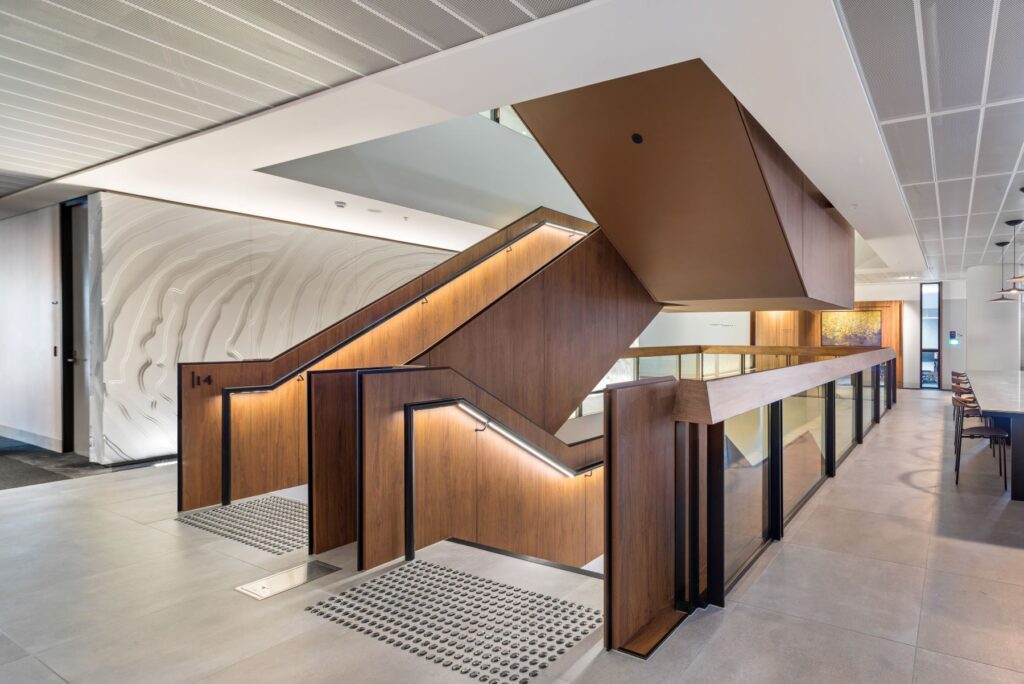
Image Credit: Pixel Collective
As a practical starting point, businesses can assess current workplace accessibility and inclusivity measures. Based on the findings, you can then put an overarching plan in place by engaging both employees with disabilities as well as disability employment program providers and accessibility experts.
- Enhance Physical Accessibility
Relating to creating a disability-friendly workplace, the Disability Discrimination Act 1992 contains several standards concerning public transport and access to premises and education.
The Disability (Access to Premises – Buildings) Standards 2010 is reviewed every 5 years, ensuring people with disabilities have equal access to public buildings and for building professionals to fulfil their responsibilities.
There are many ways to ensure a workplace or commercial building is accessible, for example:
- Easily accessible entrances and exits with ramps, slopes and wide (or automatic) doorways for individuals with mobility aids
- Installing non-slip entrance mats across main entry and exit points
- Disabled parking bays and designated drop-off points with clear signage
- Installing elevators, wheelchair ramps and stair lifts in multi-storey buildings
- Designated disabled restrooms with the appropriate accessibility fixtures
- Installing visual, audio and tactile cues for all required signage
- Clear and well-lit paths of travel for safe indoor navigation
- Installing tactile ground surface indicators and stair nosings with sufficient luminance contrast
You can create a comfortable, safe and accessible work environment by accounting for all types of disability and planning accordingly.
- Ensure Accessible & Inclusive Communications
To promote inclusivity and equal opportunities in the workplace, employers can put steps in place to improve communications and digital accessibility.
Here are some examples:
- Ensuring accessibility across all digital platforms such as using screen reader-friendly designs, adding alt text to images, and captioning videos
- Making shared documents more accessible by using PDFs with readable fonts, text recognition capabilities and sufficient colour contrast
- Creating documents in multiple formats, such as ‘Easy Read’ documents with plain language and clear headings
- Providing communication aids and assistive technologies such as screen readers, adaptive keyboards and speech recognition software
- Using video-conferencing platforms that have closed captioning and sign language interpretation capabilities
- Regularly seeking feedback and testing all digital platforms and content against accessibility requirements
However, the most effective way of ensuring accessible communication is by asking your employees about their specific communication needs and preferences.
To learn more about how you can create more accessible and inclusive communications, click here.
- Prioritise Employee Training & Awareness
From organising easily accessible meetings to providing flexible working arrangements, all employees have the right to feel welcome, safe and included at work.
Supported by clear anti-discrimination policies and inclusive hiring practices, organisations should facilitate disability awareness training and run awareness campaigns to support an inclusive workplace culture. Workplace practices and procedures should also be regularly reviewed to identify opportunities for improvement.
Includeability is an initiative of the Australian Human Rights Commission to increase meaningful employment opportunities for people with disabilities. Supporting both employers and people with disabilities seeking employment, they provide resources for employers as well as resources for people with disabilities.
The Australian Human Rights Commission also offers disability awareness training in all capital cities and regional centres. Tailored to your organisational needs, find out more about their disability rights training courses.
Case studies & real-world examples of disability inclusivity in Australia
Leading by example, there are a growing number of Australian businesses and organisations that are tackling the challenge of boosting disability inclusiveness.
Many of them are members of the Australian Network on Disability, a national not-for-profit that helps employers and organisations to engage people with disabilities.
Australia Post

With a longstanding commitment to creating an inclusive workplace for people with disabilities, Australia Post is a member of the Australian Network on Disability and has completed its Disability Confident Recruiter program.
Compared to an average of 3% amongst other Australian Public Service agencies, 6.9% of Australia Post’s total workforce has a disclosed disability as of 2014.
Based on a true story inspired by Charlie McConnell, one of their employees, Australia Post also commissioned a short film titled ‘Work Mate’ to celebrate workplace diversity and promote understanding.
For more positivity, you can also read the story about Greg Richardson’s son, Michael, who lives with a disability including hearing loss, and now works alongside him at Australia Post.
Australian National University
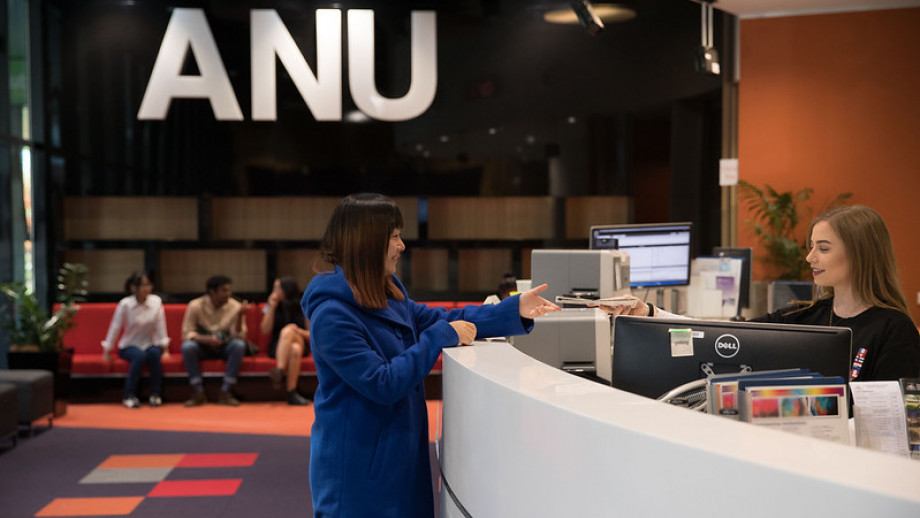
The Australian National University (ANU) rolled out its Disability Action Plan 2020-2024 to create and support accessible and flexible environments for its staff and students, amongst other key goals.
As part of the Disability Action Plan, some of their key focus areas include:
- Policy and planning to consider and include people living with disabilities, ensuring equitable access
- Development towards best-practice inclusive and accessible design for both new and existing built environments
- Ensuring all internal and external digital communications are inclusive and accessible to people with disability
IBM Australia

Partnering with Specialisterne Australia, IBM Australia rolled out its first neurodiversity program in 2019 to hire employees with autism at its Client Innovation Centre in Ballarat.
Before its commencement, Specialisterne worked with IBM to facilitate a series of autism-specific training and awareness programs.
Prioritise inclusive and accessible design with Classic Architectural Group
At Classic, our mission is to “make public spaces safe, attractive and accessible to all”.
Setting the benchmark for quality access solutions, our products and services enable building professionals Australia-wide to do what they do best. Our continually expanding range includes tactile indicators, stair nosings, entrance mats, car park safety systems, and more.
Specialising in end-to-end fulfilment from initial consultation to final installation, we’re here to help your team get a step ahead when it comes to creating better and safer access for all.
Offering nationwide support and guaranteed supply, you can explore our past projects and contact us on 1300 244 377 to learn more about how Classic can best support your next project.
